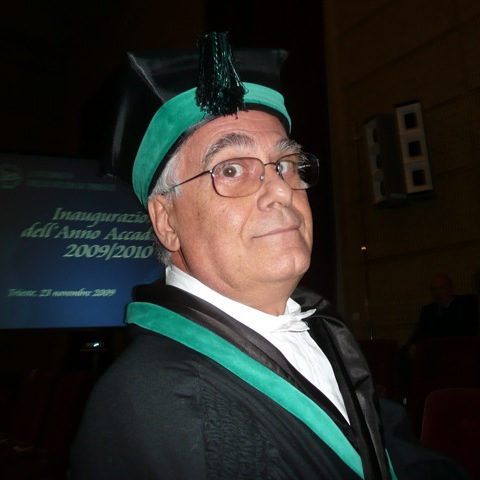Highlights of my work and anecdotes#
The scientific activity of Prof. Giuliano Francesco Panza is marked by the broad multidisciplinary nature of the problems considered: integrated analysis of structure and dynamics of the lithosphere-astenosphere system; integrated approach to modelling of the seismic waves in the near-field and far-field; earthquake-prone lineaments and premonitory seismicity patterns. A wide range of sofisticated theoretical methods and models was developed in these studies: the advanced methodology for seismogram synthesis; inversion; pattern recognition.
The definite sign of excellence is the extension of the results to applications without sacrifice of scientific level of the study. The applications concern strong seismic motion, reduction of seismic and volcanic risk. Prof. Panza, who received, in 2000, the Beno Gutenberg medal by the European Union of Geosciences for outstanding contributions to Seismology, is presently no doubt the strongest Italian seismologist. He is dedicated and successful leader of several international projects, most spectacular one (completed in 2003) - Realistic Modelling of Seismic Input for Megacities and Large Urban Areas supported by UNESCO-IUGS-IGCP - involved more than 100 scientists, distributed in more than 25 centers, several of them located in CEI countries.
He has been coordinating, for the CEI University network, Seminars and stages on “Earth and Environmental Physics: Geodynamical Model of Central Europe for Safe Development of Ground Transportation Systems”, at the Department of Earth Sciences of the University of Trieste and at The Abdus Salam International Center for Theoretical Physics. This activity represented a natural extension of the project “Lithospheric studies of the Periadriatic domain and the geodynamics of the Circum-Pannonian belt”, launched in 2001 by the CEI’s Committee on Earth Sciences. CEI activity continues now in the frame work of CERES-ICTP fellowship.
To improve, as much as possible, from a statistical point of view, the assessment of seismic hazard, in co-operation with scientists from IIEPT of the Moscow Russian Academy of sciences proposed the use at variable scale of the fractal Gutenberg-Richter relation. This result has deep implications in the development of the intermediate-term middle-range earthquake prediction methods, done, again, in co-operation with scientists of IIEPT, Moscow. With the Seismology Group of Dipartimento di Scienze della Terra dell'Universita' di Trieste and with the SAND group of the Abdus Salam International Centre for Theoretical Physics (ICTP), he supervises, has developed a very powerful theoretical-numerical tool for the computation of complete synthetic seismograms that is at the base of his methodology for the neodeterministic assessment of seismic hazard, currently applied in several large urban centres and megacities. Recently, in cooperation with ASI, the Italian space agency, the simultaneous use of the neodeterministic approach for the ground motion estimation, of the monitoring of the space-time variation of hazard, and of the Earth observation data, lead to the construction of time-dependent hazard models based on strong geophysical ground, that have generated particular interest at Civil Defence level.
Any further pages in alphabetic order of their title as created for or by you.
#
Just click at "Create new page", then type a short title and click OK, then add information on the empty page presented to you (including maybe a picture from your harddisk or a pdf-file by using the "Upload" Button) and finally click at "Save".
...no Data available yet!



